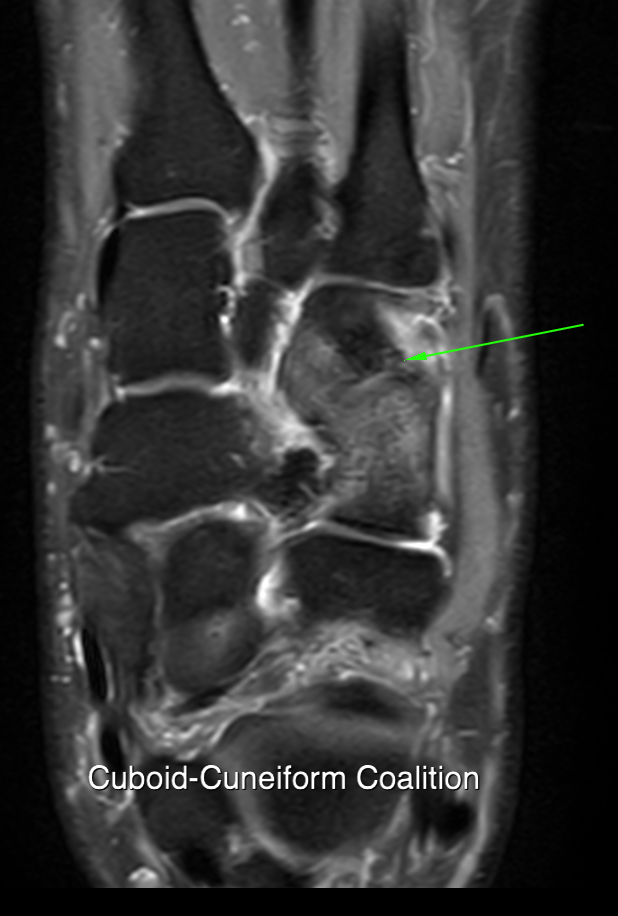TYPES OF HINDFOOT COALITION
• Cancaneonavicular (CN)
• Talocalcaneal (TC)
• Posteromedial
• Cuboid Navicular
• Cuboid Cuneiform
• Other
Coalitions are also divided into:
• Osseus
• Non osseus
CN margially more common than TC, which usually involve the middle facet
Non osseus are more common than osseus
Talonavicular, calcaneocuboid & cubonavicular also occur
Many coalitions remains asymptomatic but with increased activity in the 2nd dedicated they can present with hindfoot stiffness.
Exuberant bone formation around a TC coalition main leads to neural impingement and some patients present with tunnel syndrome
CN coalitions are easier to diagnose on plain films than TC.
X Ray findings in CN coalition
• elongation of the anterior process with either a bony bridge or and irregular pseudarthrosis between the two bones.
• referred to as the Anteater sign.
• widening of the navicular on the frontal radiograph
TC coalitions are more difficult to see, clues include
• Normal middle facet is not well seen on the lateral view
• A small traction syndesmophyte on the dorsal aspect of the talar neck
• C sign on lateral
• enlargement of the sustentaculum
• shortening of the talar neck
• downsloping middle facet on AP, theDrunken Waiter sign
True coronal images cut obliquely across the middle subtalar facet and may give the appearance of an abnormal articulation resulting in misdiagnosis of coalition
Check the sagittal images carefully before making this diagnosis
In patients suspected of having coalition, tilt the coronals perpendicular to the middle subtalar facet and
Tilt the axials along the calcaneo navicular articulation.






















